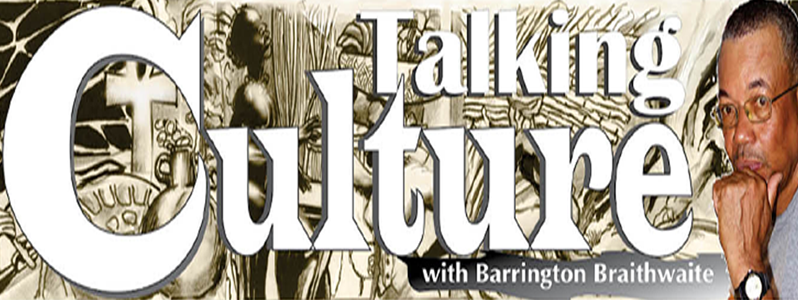HISTORY is written according to the facts of the day and its moods. Some things are hidden, some things are purposely ignored or repressed; other times, a popular mood is captured. At the same time, a balance of facts is sacrificed; all is hardly ever, in relevance, told.
Due to the fact that I was commissioned to do two renderings for his book, I received a complimentary copy of Thomas Harding’s ‘WHITE DEBT’, the latest book on the subject of the issue of 1823, a text of the first enslaved African non-violent social protest in the then British Guiana, and possibly in the British colonies of the Caribbean.
What is unique about this book is that the author is British, and was able to have at his disposal personal testaments, through diaries and other records from that era. I first met Thomas Harding while he was a guest of the African Cultural and Development Association (ACDA) during one of its Maafa (African Holocaust) ceremonies on the Georgetown Seawall a few years ago. Even more unique, in my humble opinion, is that Harding’s book brings to the table a social anthropologist’s approach to drawing the reader into the fray, thereby making it a must-read, and a personal library’s must-have reference inclusion.
The book defines how the nation that became Guyana was economically and socially built with an array of sub-cultures.
He describes a typical workday in the life of a slave thus: “With a stroke of a curved blade, called a billhook, the labourers hacked down the charred canes…” He also notes that “the men and women ranged in age from their late teens to their mid-twenties, and were exceptionally fit.” At that particular stage of their lives, he says, they were assigned to what was known as the ‘first gang’, but “when they reached their late twenties, after a decade in the fields, they would be transferred to the ‘second gang’, whose tasks were less arduous. If they were lucky enough to reach their forties, they would join the ‘third gang’, who tended the children, looked after the animals, and weeded the fields. Some of the women had babies on their backs; nobody stopped, not even for a sip of water.”
 This narrative must be coupled with another quote from the book in reference to the slave owner, John Gladstone, a Scotsman who petitioned against the abolition of slavery on popular, self-serving grounds: “The good denizens of England, Scotland, Wales and beyond were addicted to their sugar, cacao, cotton, tobacco and coffee. Who was going to produce such necessary commodities if the enslaved people were emancipated?” This was the same character that would sugarcoat the traders of Calcutta to collaborate and undertake the bringing of the first indentured labourers to these shores from India, thereby launching the era of ‘Indentureship’. This is an insight into the pretentiousness and double standards of Demerara’s colonial society in the 18th Century.
This narrative must be coupled with another quote from the book in reference to the slave owner, John Gladstone, a Scotsman who petitioned against the abolition of slavery on popular, self-serving grounds: “The good denizens of England, Scotland, Wales and beyond were addicted to their sugar, cacao, cotton, tobacco and coffee. Who was going to produce such necessary commodities if the enslaved people were emancipated?” This was the same character that would sugarcoat the traders of Calcutta to collaborate and undertake the bringing of the first indentured labourers to these shores from India, thereby launching the era of ‘Indentureship’. This is an insight into the pretentiousness and double standards of Demerara’s colonial society in the 18th Century.
That with the end of slavery and the creation of the ‘Colonial’ that followed, that those pretentions and disconnect from social reality persisted beyond independence should not be surprising, if the exploration of a book like ‘White Debt’ is well digested in the self-awareness. So, we turn to the author’s debt to John Cheveley’s diary which captured his reluctant sojourn to the colony of Demerara in 1823. As usual, the masters of slavery were men who were loyal to religion. However, in the colony’s world, the hypocritical contradicting practices were firmly in place, as Cheveley, himself having no ‘cause of righteousness’ found the colonials to be remarkable hypocrites, as he wrote, “It was a long walk through the scorch of mid-morning to the other end of town.
When they (Cheveley and Pattinson, his host and employer in Georgetown arrived) joined a mass of folk, all well dressed in coats and frocks and fine hats, what he found disturbing at Saint Georges was the following: “colonists and their families were grouped downstairs, whilst men and women of African heritage and those of mixed-race were forced upstairs in the stifling balcony.”
Cheveley later described this division as ‘hypocritical’, given that many of the white men downstairs lived and slept with the Black women who were segregated upstairs. Cheveley mentioned this in his diary conversations with his best friend in the colony, Ben Hopkinson. Hopkinson owned plantations Bachelor’s Adventure and Cove and John, two Cotton estates on the East Coast. Ben Hopkinson had just finished his education at Cambridge University. Ben Hopkinson was an Afro-Demerara man of mixed heritage. His father was a white Englishman from Hertfordshire, and his mother, Johanna, an Afro woman of mixed heritage originally from Tobago. Ben was described as dark. What is interesting was his approach to revolutionising his plantations. “His aim was to increase yields by using the latest scientific techniques and to improve the treatment of enslaved men and women attached to his estates. He would put aside the whip and hoped to encourage productivity by deploying training and respect.” This was a concept alive before Emancipation, and not from a popular abolitionist.
‘White Debt’ adds to previous works done by other historians and writers, local and beyond. Harding’s work reintroduced what was missing locally from our knowledge of the ‘Black Lives Matter’ Movement that it is not centred entirely around current transgressions. BLM embraces a holistic timeline. Also, Harding’s interviews with local folk, of which his visit with Jocelyn Dow is inspiring, and his conversations in England, with the descendants of those who benefited from slavery, bring an important biographical presence to his book. I don’t know if they are still available, but copies are/were at Austin’s Book Services some weeks ago.



.jpg)








